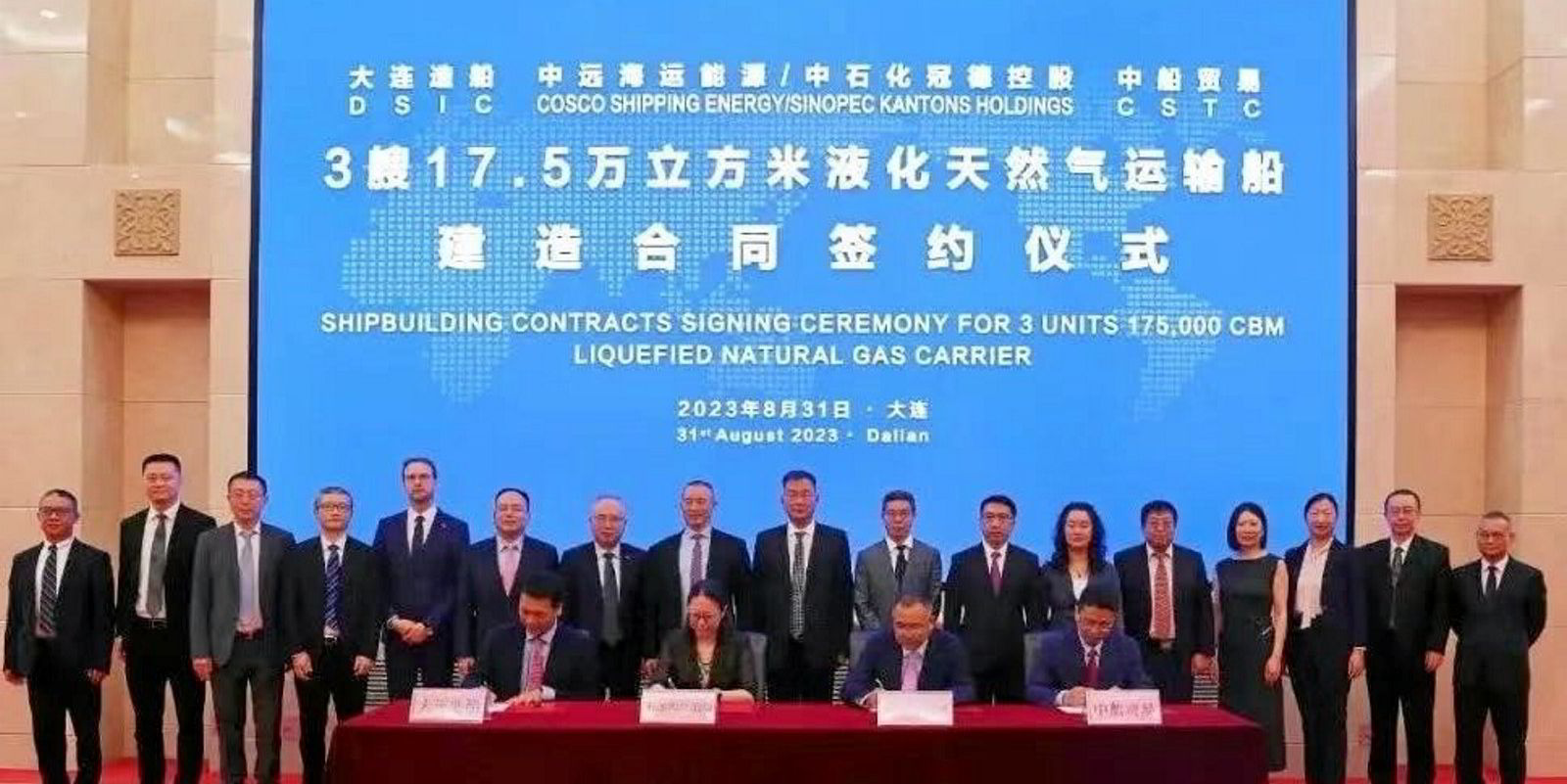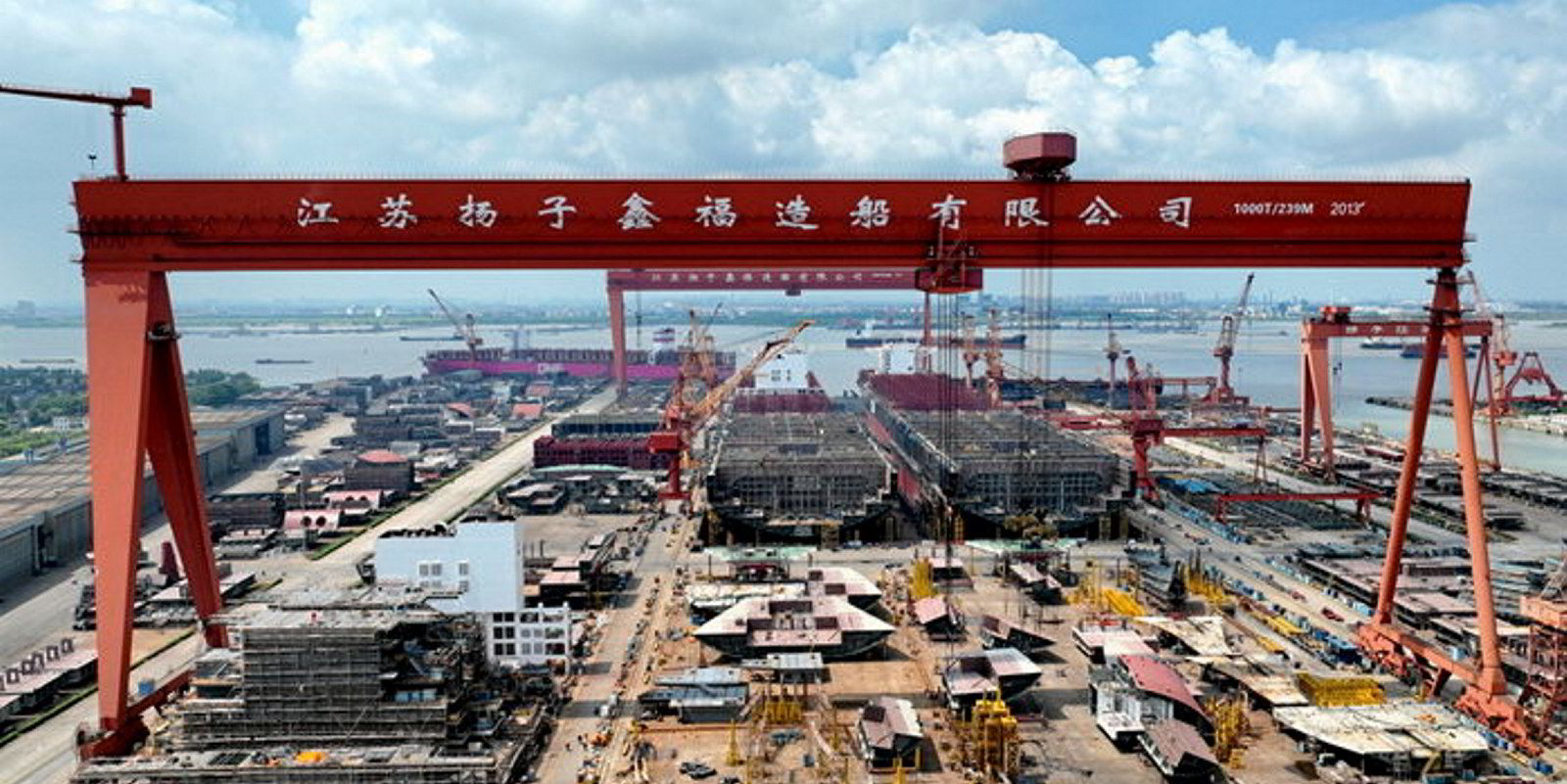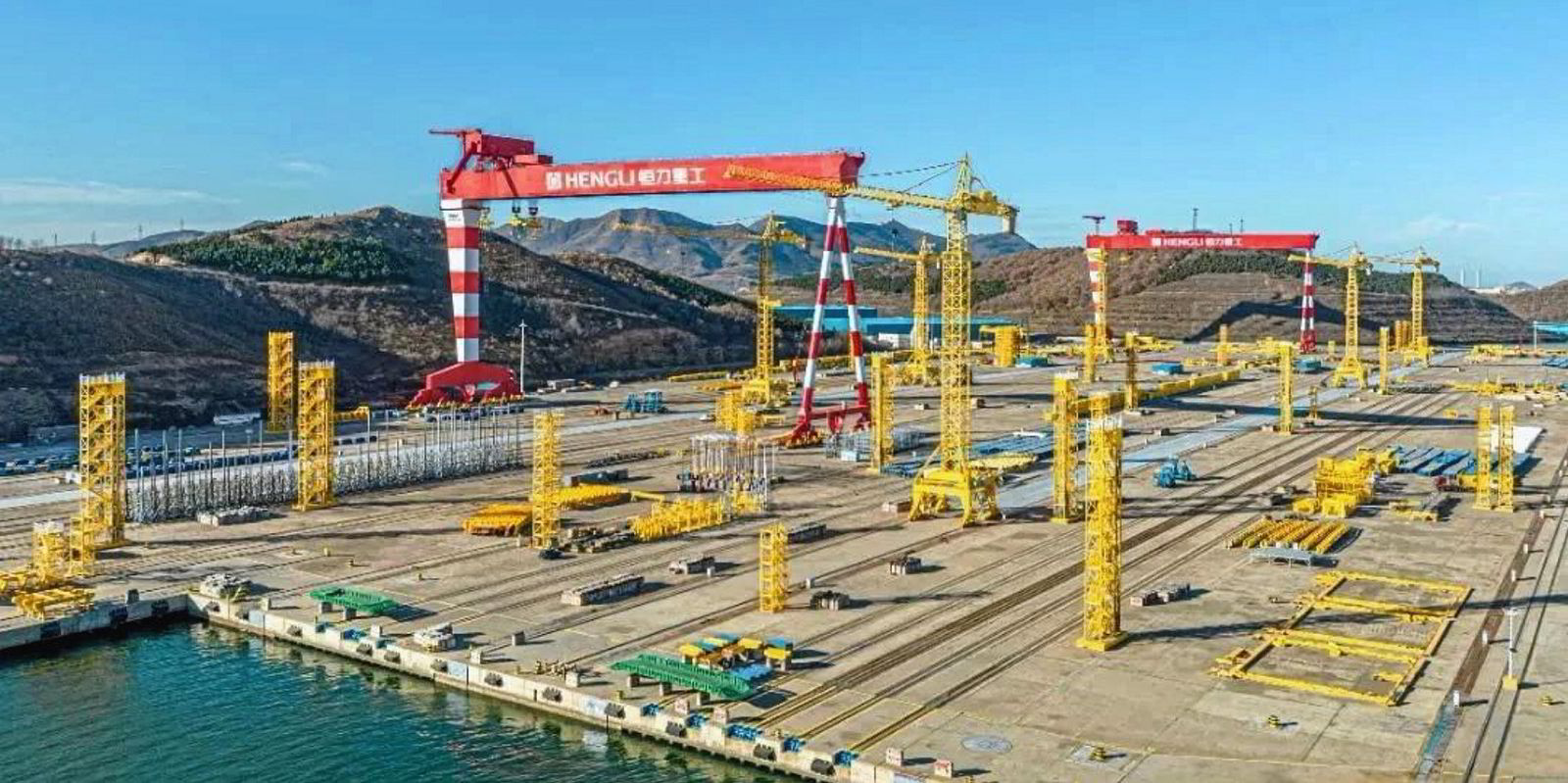China’s shipyards are making ever-deeper inroads into technically advanced vessels and tanker newbuildings that have traditionally been dominated by shipbuilders in South Korea and Japan.
The world’s leading shipbuilding nation saw orders for tanker newbuildings almost triple in 2023 on the previous year.
In the past 10 months, the Xi Jinping-led country inked 11 VLCCs, 21 suezmax tankers, 50 aframax tankers and close to 50 handysize to panamax tankers, according to Clarksons’ China Shipbuilding report.
China is now sitting on the biggest tanker orderbook worldwide with 351 newbuildings of 6.7m cgt, while South Korea has 106 tanker newbuildings of 2.7m cgt booked at its shipyards.
Boxship and bulker yard Yangzijiang Shipbuilding, which was not included in the top 20 tanker shipyard list last year, ranks ninth in 2023 with 17 newbuildings of 400,000 cgt.
Adam Kent, managing director of shipping consultancy and research company Maritime Strategies International (MSI), said: “High-level trends regarding the success of Chinese shipyards in securing market share for newbuild contracting of chemical tankers are more variable on a year-to-year basis than the major bulk sectors.
“Chinese shipyards have been increasingly successful in securing a greater proportion of chemical tanker newbuild contracts. Between 2000 and 2022, their relative share of annual global contracting volumes doubled from around 20% to 40%.
“They have been particularly successful in winning contracts in the year to date, with Chinese shipyards accounting for two-thirds of 2023 orders in dwt terms,” he said.
Shipbuilding brokers said a price gap of between 13% and 15% on tanker newbuildings between South Korean shipyards and Chinese shipbuilders, and the availability of early delivery slots, have helped the latter in winning orders.
Pricing discount

They cited an MR tanker as an example: South Korea’s Hyundai Mipo Dockyard is quoting about $50m for delivery in 2026, while Yangzijiang is asking slightly more than $43m for a scrubber-fitted ship.
MSI said the cost base at Chinese shipyards is typically lower than their rival overseas yards, allowing them to offer comparable newbuildings at lower prices.
“This is evident across the spectrum of ship types,” MSI said. The average price discount for newbuild ships at Chinese shipyards compared to their Japanese and South Korean counterparts typically ranges from 5% to 20% as of August 2023, depending on ship type and size, as well as yard.”
It added that “the delta of the price differential between Chinese and Japanese/South Korean shipyards is not static, but instead varies over time, depending on market conditions and the development of individual shipyards”.
MSI said Chinese shipyards were mostly unsuccessful in contracting LNG carrier newbuildings until last year, with owners preferring the three major South Korean shipbuilders — HD Hyundai Heavy Industries, Hanwha Ocean (formerly Daewoo Shipbuilding & Marine Engineering) and Samsung Heavy Industries.
However, the situation changed during the LNG carrier contracting boom of 2022.
“While the South Korean shipyards still won the majority of newbuild contracts, Chinese yards made significant inroads, securing orders for 57 large LNG ships,” Kent said.
He added that several more Chinese shipyards have secured orders for midsize LNG carriers since 2017.
Surging car carrier demand
“However, LNG carrier newbuilding activity in China is still dominated by CSSC, with their group of yards accounting for 90% of the over 60,000-cbm LNGCs [LNG carriers] currently on order,” he said.
A surge in demand for dual-fuel pure car/truck carriers and the fleet-renewal programmes of companies have also helped China to break into the market for high-specification ships that have previously been dominated by South Korean and Japanese shipyards.
“Since 2020, they [Chinese shipyards] have won 80% of all orders, compared to just 27% between 2010 and 2015, the last time significant volumes of PCTCs were ordered,” Kent said.
MSI thinks Chinese shipyards will continue to push up the value and technical complexity of their work.
This will most likely take the form of a two-pronged approach. Firstly, to consolidate and expand upon gains already made in certain ship types such as gas carriers, tankers and large container ships, and then, secondly, break into other markets — specifically the large passenger ship market.






